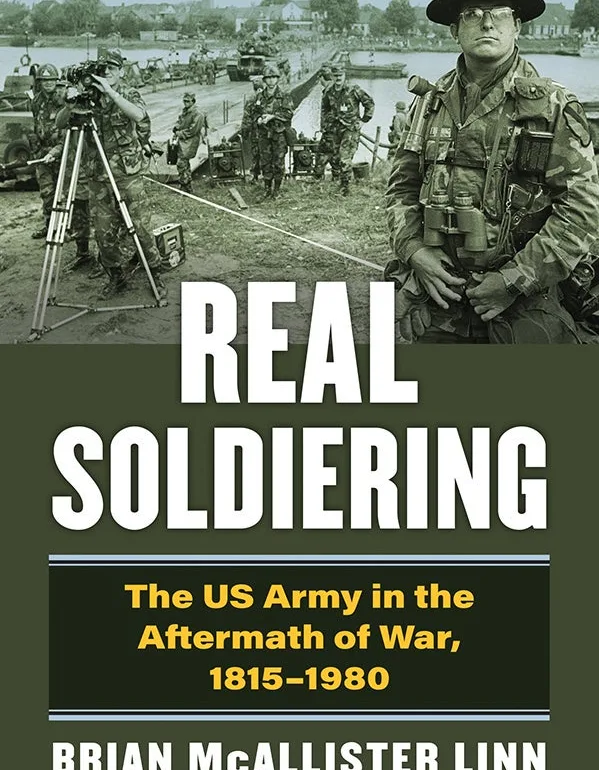Soldiering Continues After Shooting Stops
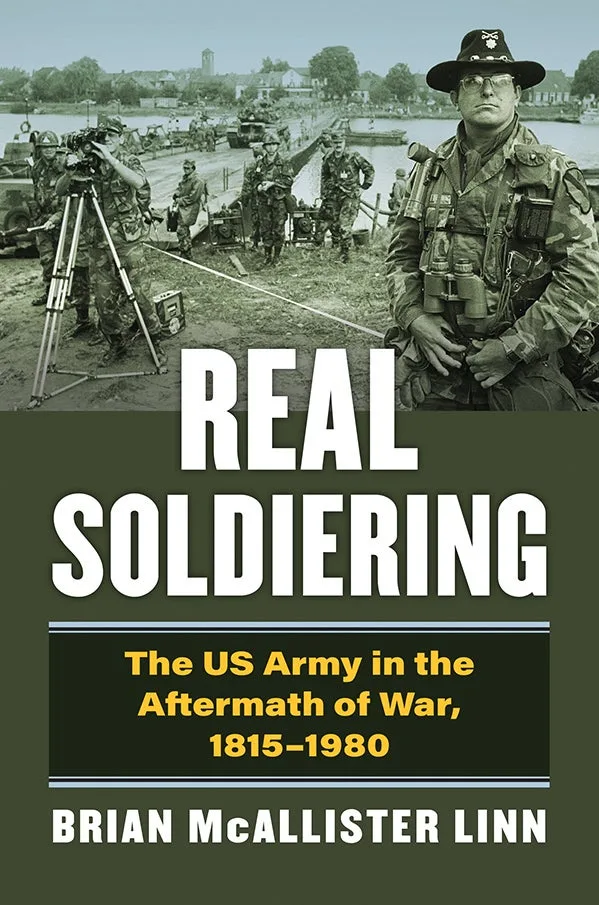
Real Soldiering: The US Army in the Aftermath of War, 1815–1980. Brian McAllister Linn. University Press of Kansas. 336 pages. $44.95
By Col. Kevin Farrell, U.S. Army retired
Brian McAllister Linn has found an important but largely overlooked question in the history of the U.S. Army: What happens when the battles are over and peace (or at least a truce) is in place?
His new book, Real Soldiering: The US Army in the Aftermath of War, 1815–1980, is an interesting investigation of what any Army veteran would know as the “Old Army,” that mythical force discussed by fellow soldiers with more experience describing what it was like in the good old days.
Organized into five chapters with a brief conclusion, Real Soldiering examines the common experiences of junior officers, NCOs and enlisted soldiers in decade-length segments that followed U.S. wars from the 19th century through Vietnam, with a postscript dedicated to the decade following the Cold War and also the end of the wars in Afghanistan and Iraq. Although Real Soldiering does not ignore the official Washington-centric view of the Army, the focus is clearly on the “troops in the field forces.”
Linn’s previous scholarship is thought-provoking and challenging of long-established myths. Real Soldiering continues in this vein. Rather than seeing each postwar era as unique, Linn argues “that in the decade following every major conflict since the War of 1812, the US Army (or Regular Army) has undergone a long, painful, and remarkably consistent recovery process as it struggles to build a new model force to replace the Old Army that entered that conflict.”
Demonstrating a mastery of military doctrine, Army history at the institutional as well as unit levels, the conduct of major American wars and the flow of American politics, Real Soldiering makes its case in relatively compact chapters that not only prove the central thesis of the book but reveal interesting facts along the way.
With perhaps the exception of the decade following World War II and the unexpected Korean War, every postwar U.S. Army was “overcommitted and could not fulfill its missions.” In a depressingly repetitive pattern, despite lessons learned during the preceding conflict, the old patterns returned.
Linn is comfortable challenging the reputations of many Army luminaries and effective at integrating what was happening at the national level and exploring the consequences in the field army.
A case in point are the Root reforms of the early 1900s. As secretary of war from 1899 to 1904, Elihu Root is remembered as a great modernizer credited with reorganizing the War Department, enlarging the U.S. Military Academy, establishing the U.S. Army War College, reforming the National Guard and creating the General Staff. Despite the powerful legacy of Root’s tenure, Linn demonstrates that the consequences of these reforms were more ambiguous when they were put into practice.
The research and writing are excellent throughout Real Soldiering. It is a delightful—and at times sobering—read. However, a more thorough investigation of the decade following the Cold War and the end of the wars in Afghanistan and Iraq would have been appreciated.
This exciting new book is strongly recommended for anyone with an interest in the history of the Army and especially the experiences of the Regulars in the Old Army.
Col. Kevin Farrell, U.S. Army retired, is the former chief of military history at the U.S. Military Academy, West Point, New York. He commanded a combined arms battalion in Iraq. His most recent book is The Military and the Monarchy: The Case and Career of the Duke of Cambridge in an Age of Reform. He holds a doctorate in history from Columbia University, New York.
* * *
The US Military’s Role in Grand Strategy
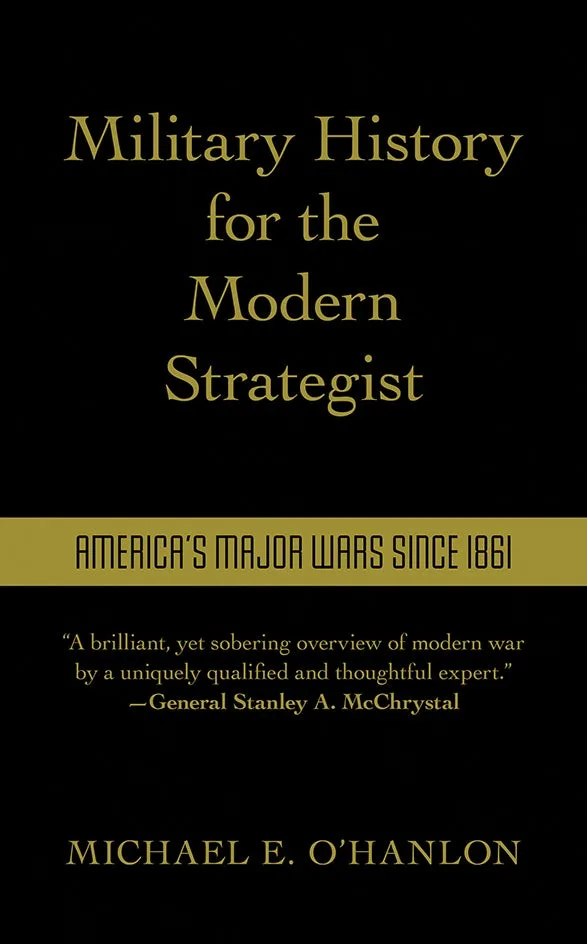
Military History for the Modern Strategist: America’s Major Wars Since 1861. Michael O’Hanlon. Brookings Institution Press. 416 pages. $39.95
By Col. Andrew Forney
A generation of U.S. strategic leaders, both military and civilian, has grown up fighting two insurgencies rather than practicing international relations on a grand scale. The recent realization that the U.S. was entering an era defined by strategic competition caught many on the back foot, leading to questions regarding the decay of strategic competence. Events in Afghanistan, Syria, Ukraine and Taiwan seemed to demonstrate that the United States’ ability to handle individual crises, never mind their totality, remained shaky.
For Michael O’Hanlon, prolific author and strategy expert at the Brookings Institution, it is beyond time that policymakers and leaders addressed these intellectual shortfalls by studying the military history of the U.S. and assessing the role of the military element of power in grand strategy. His new book, Military History for the Modern Strategist: America’s Major Wars Since 1861, seeks to help this along, providing a CliffsNotes version of the major wars of the U.S. from the Civil War to today.
Each of these wars, O’Hanlon argues, shows how policymakers can misread events and assume away enemy actions. Strategic leaders often misjudge the duration and severity of a conflict, either believing a war would be a short and simple affair or, inversely, moving too tentatively through a campaign. The cost of these misunderstandings was often measured with the lives of the nation’s soldiers.
O’Hanlon does not look to surprise; the book’s “just the facts” attitude aligns with his didactic mission. His intent, as he outlines in the book’s introduction, is to relay the key elements of each conflict and its outcomes “conceptually and succinctly,” tailor-made for the busy policymaker. This works generally well, although, in a few places, his pithy narrative papers over still-contested operational elements and outcomes.
To his credit, O’Hanlon acknowledges his own biases ahead of the chapter on Iraq and Afghanistan, outlining his roles in observing and studying these conflicts. His take on the Surge in Iraq and the withdrawal from Kabul, Afghanistan, border on opinion, however, and should serve as the opening of further study instead of closing the case.
To this end, each chapter would have benefited from a brief “recommended readings” section that not only covers the relevant readings that inform the chapter but also present different interpretations of key events.
O’Hanlon closes the book by drawing together three key observations. The first two are pretty straightforward: victory is never guaranteed, and wars are hard. The last one—that the American system remains resilient in the face of global pressures—should make the reader pause and reflect. As O’Hanlon shows, the U.S. has suffered numerous setbacks since 1861. Yet through it all, the U.S. has maintained its place upholding the international order, espousing liberal values and managing a now-global alliance and partnership network.
Even after what Chairman of the Joint Chiefs of Staff Gen. Mark Milley dubbed a “strategic failure” in Kabul, the U.S. rallied allies and parties rapidly to help defend Ukraine from Russia’s unwarranted military aggression. O’Hanlon understands that these two factors—U.S. resilience and its international leadership—are related and support each other.
Here lies O’Hanlon’s chief lesson: As the U.S. faces the challenges of the 21st century, it must ensure it does not compromise its values and its friendships. Doing so would spell an end to the international order the country worked so hard to build and maintain.
Col. Andrew Forney is director of the Commander’s Action Group, XIII Airborne Corps, Fort Liberty, North Carolina. Previously, he served as the senior Army strategist, Strategy and Force Development Branch, Office of the Undersecretary of Defense for Policy, the Pentagon. He has a master’s degree in campaign planning and strategy from the Joint Advanced Warfighting School and holds a doctorate in history from Texas Christian University.
* * *
An Account of Activism in the Vietnam-Era Army
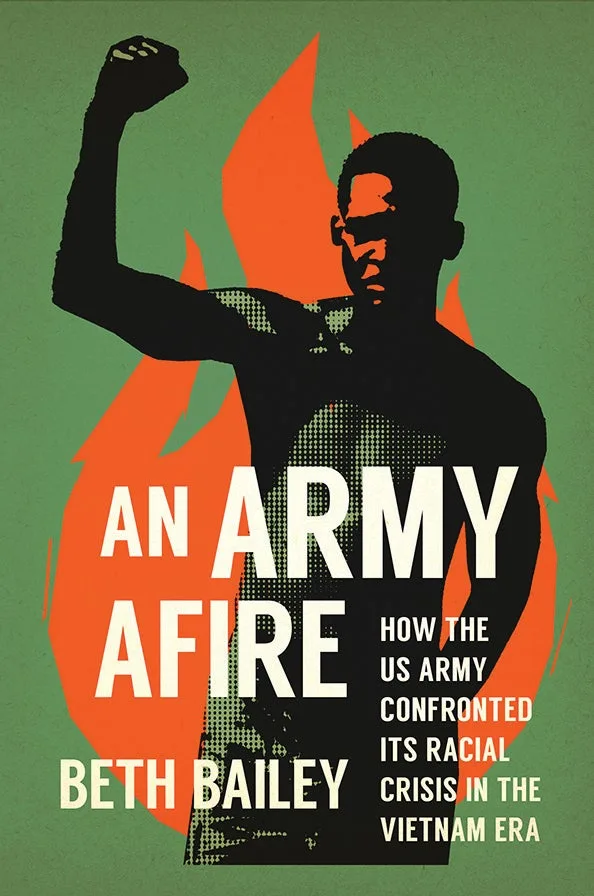
An Army Afire: How the US Army Confronted Its Racial Crisis in the Vietnam Era. Beth Bailey. University of North Carolina Press. 360 pages. $35
By Connor Williams
Most students who take a U.S. history survey course learn some version of a classic, tragic narrative: that around 1965, the Vietnam War ended the Civil Rights Movement. The war reoriented the nation’s priorities, stalled Great Society aspirations and took America into a quagmire.
However, such convenient stories almost always fail to capture U.S. history in all its complexity. The earlier 1960s contained plenty of movements not tied to civil rights, like Barry Goldwater’s presidential campaign and the almost four of 10 Americans supporting him. And struggles for racial equality continued throughout the Vietnam era, especially as African Americans who had experienced the Civil Rights Movement at home demanded similar social changes while serving in uniform abroad.
It is into this world of armed services activism that Beth Bailey so perceptively and compellingly brings us in An Army Afire: How the US Army Confronted Its Racial Crisis in the Vietnam Era. Though Bailey’s timeline is familiar—centering on 1968 as a year of changes and tracing new initiatives and ideas through the early 1970s—her historical arguments are new. Her nine chapters of carefully researched narrative feature equal parts institutional actions, anecdotal evidence and policy adaptation. Bailey expertly charts a series of Army actions resulting in relative success for racial inclusion.
An Army Afire is also masterful military history, intricately sourced from Army archives and DoD records. Most of Bailey’s subjects are not political, symbolic or strategic leaders. Instead, she studies the seconds-in-command, undersecretaries, deputies and assistants doing the heaviest work of doctrinal creation, and the junior officers and senior NCOs implementing it. Moreover, the title is as accurate as it is alliterative: Bailey focuses on the Army as a distinct service, with unique institutional logics and cultures.
Indeed, Bailey’s institutional understanding of the past proves the book’s greatest strength and central focus: She investigates the Army as the massive institution it was during the Vietnam era, featuring 9.1 million personnel torn between conformity, culture wars and combat readiness. Bailey resists “one-size” evaluations that make the past or its people too simple. Instead, she highlights how a worldwide force of Americans simultaneously reacted to racial conflicts in different and divergent ways. No single program could be a silver bullet, but the synthesis of many innovative ideas led to meaningful policy changes over time.
Bailey centers this institutional focus from the start. “Change,” she writes, “has to percolate through culture.” That process of percolation, including internal investigative reports, formal briefings, private-to-flag officer advisory councils, race relations institutes, post exchange product policies, Army Afro haircut regulations, and negotiations over soldiers weaving slave bracelets or giving dap, shows a series of relative successes and failures. In virtually no cases did controversies truly reinvent the structures surrounding them. Still, military logic adapted and expanded to address racial complaints.
Though this process sometimes seems a bit nebulous in Bailey’s middle chapters on cultural conflicts, the latter chapters on housing policy, military justice and affirmative action demonstrate how institutions like the Army can—even if slowly and unevenly—enact meaningful, impactful and lasting changes. And throughout the book, readers encounter a litany of racial grievances too often absent from our contemporary memories.
Ultimately, none of Bailey’s protagonists could see, exactly, where their work would lead. But their combined protest, communication, reflection, innovation, experimentation and compromise moved the Army from one of our nation’s least inclusive organizations to one of its most. May their past successes sustain our present efforts.
Connor Williams served as lead historian for the Naming Commission. He works in the departments of History and African American Studies at Yale University, Connecticut. He will receive a doctorate dually awarded by both departments this fall.
* * *
Famed Correspondent’s Chronicle of War
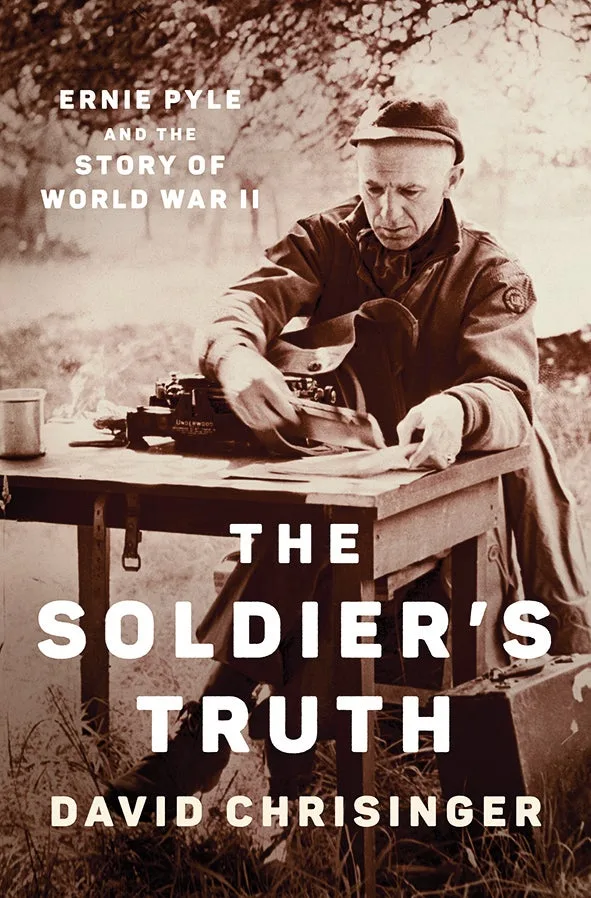

The Soldier’s Truth: Ernie Pyle and the Story of World War II. David Chrisinger. Penguin Press. 400 pages. $30
Brave Men. Ernie Pyle. Introduction by David Chrisinger. Penguin Press. 544 pages. $24
By Gregory Fontenot, U.S. Army retired
The Soldier’s Truth: Ernie Pyle and the Story of World War II by David Chrisinger is an exemplary biography of World War II reporter Ernie Pyle. The director of the Public Policy Writing Workshop at the University of Chicago’s Harris School of Public Policy, Chrisinger is the author of several books and a good storyteller. His purpose is to share his journey to understand what made Pyle so beloved. Pyle was arguably the brightest star in a galaxy that included Hanson Baldwin, A.J. Liebling and Don Whitehead, as well as those who came of age after the war, such as Andy Rooney and Walter Cronkite.
Pyle wielded tremendous influence during the war. Senior officers, including Gens. Dwight Eisenhower and Omar Bradley, believed his writings were good for morale. Eleanor Roosevelt claimed she “would not miss that column every day if I possibly could help it.” His columns appeared in some 500 newspapers and in 1944 earned him the Pulitzer Prize. Pyle published two wartime books, Here is Your War in 1943 and Brave Men in 1944. Penguin Press has released a new edition of Brave Men, with an introduction by Chrisinger, concurrently with The Soldier’s Truth.
Brave Men traces Pyle’s wartime experiences, beginning with the invasion of Sicily in 1943 through the late summer of 1944. It includes his famous account of the death of Capt. Henry Waskow, killed in Italy fighting with the 36th Infantry Division. Waskow inspired confidence, even love, among his soldiers. Pyle’s report of Waskow’s soldiers mourning their dead commander prompted the 1945 movie The Story of GI Joe. The Army released soldier-actor Burgess Meredith long enough for him to play Pyle alongside Robert Mitchum, who played the role inspired by Waskow.
Serendipity led Chrisinger to this work. Wanting to see where his grandfather fought in the war, in 2016 he visited Okinawa, Japan, and came across a memorial to Pyle. Returning home, Chrisinger read Brave Men. The book moved him to retrace Pyle’s path from North Africa, to Sicily, Italy, the U.K., France, Belgium and, finally, to Okinawa, where a Japanese machine-gunner killed Pyle on April 18, 1945.
Chrisinger’s biography of Pyle follows that same route, detailing the reporter’s growing fame. He enables the reader both to see Pyle as others saw him and how the GI journalist saw himself.
Pyle emerges as complex and troubled. His wife suffered from alcohol abuse and mental illness that led to more than one attempt at suicide. Pyle often felt inadequate, exhausted by what he saw and afraid for his life. He dealt with his troubles with grace but also with binge drinking.
Despite his domestic and personal travails, Pyle delivered—as has Chrisinger with these books.
Col. Gregory Fontenot, U.S. Army retired, commanded a tank battalion in Operation Desert Storm and an armor brigade in Bosnia. A former director of the School of Advanced Military Studies, his most recent book is No Sacrifice too Great: The 1st Infantry Division in World War II.


